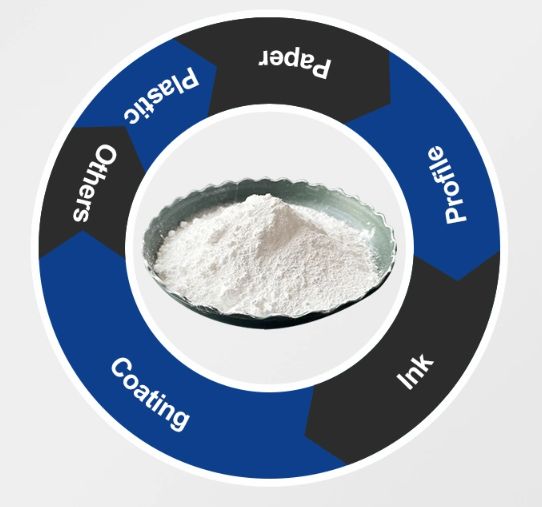
Dec . 04, 2024 18:53 Back to list
titanium dioxide producers
Titanium Dioxide Producers Key Players and Industry Insights
Titanium dioxide (TiO2) is one of the most important industrial minerals used primarily as a pigment in paints, coatings, plastics, and paper, as well as in a variety of other applications, including cosmetics and food coloring. It possesses excellent opacity, brightness, and durability, making it essential for numerous products we encounter daily. The global demand for titanium dioxide has spurred significant growth within the industry, leading to a competitive landscape dominated by a few key players.
Major Producers in the Industry
The titanium dioxide market is primarily dominated by several large corporations that command a significant share of global production. Notable producers include
1. Chemours Company Spun off from DuPont in 2015, Chemours is one of the leading manufacturers of titanium dioxide in the world. The company’s TiO2 products are marketed under the brand name Ti-Pure, catering to various sectors such as paints and coatings, plastics, and inks. Chemours operates several production facilities strategically located across North America and Europe, allowing it to efficiently serve its diverse customer base.
2. Tronox Holdings plc Formed from the merger of Tronox and the titanium dioxide business of Cristal, Tronox is now a major player in the titanium dioxide market. The company operates several mines and processing plants, providing a vertically integrated approach to TiO2 production. Tronox is noted for its focus on sustainable practices and innovation, working to reduce environmental impact while meeting the needs of its customers.
3. Lomon Billions Group Based in China, Lomon Billions Group has rapidly ascended to become one of the largest titanium dioxide producers in the world. With a significant manufacturing capacity, the company serves both domestic and international markets. Lomon Billions is known for its investment in research and development, continually improving its product quality and production processes.
4. Venator Materials plc Venator is another significant player in the titanium dioxide market, providing high-performance TiO2 products worldwide. The company’s focus on customer-specific solutions and its commitment to sustainability have positioned it well in competitive markets. Venator operates multiple production facilities and is dedicated to advancing the efficiency of its manufacturing processes.
5. Kronos Worldwide, Inc. A leading manufacturer with a long-standing history in the TiO2 market, Kronos produces a range of TiO2 products for various applications. The company emphasizes quality and innovation, continuously striving to enhance its offerings while adhering to strict environmental and safety standards.
titanium dioxide producers

Market Trends and Innovations
The titanium dioxide market is influenced by several factors, including economic trends, regulatory changes, and technological advancements. One significant trend is the increasing demand for eco-friendly and sustainable products. As environmental concerns grow, end-users are seeking out TiO2 suppliers that prioritize sustainable production methods and lower carbon footprints. This has led to increased research into alternative feedstocks and processes that reduce energy consumption.
Another notable trend is the expanding application range of titanium dioxide, particularly in the field of nanotechnology. Innovations in TiO2 nanoparticles have opened new avenues for applications in fields such as medicine, energy, and environmental remediation. The emerging applications are expected to drive future growth in the titanium dioxide market, as industries explore the unique properties of TiO2 at the nanoscale.
Challenges Facing Titanium Dioxide Producers
Despite the strong market demand, titanium dioxide producers face several challenges. One of the primary issues is the fluctuating prices of raw materials and energy costs, which can impact profitability. Additionally, compliance with increasingly stringent environmental regulations poses challenges in terms of operational costs and technological upgrades.
Global competition also adds pressure, particularly from emerging markets where production costs may be lower. Producers must continuously innovate and improve efficiency to maintain a competitive edge. Furthermore, market saturation in certain regions can lead to pricing pressures, necessitating strategic planning and market differentiation.
Conclusion
Titanium dioxide producers play a critical role in modern industrial practices, providing essential materials for a vast array of applications. Understanding the dynamics of this market, from major players to emerging trends and challenges, is crucial for stakeholders aiming to navigate the complexities of the titanium dioxide industry. As environmental considerations and technological advancements shape the future of production, the ability to adapt and innovate will determine the success of these producers in the evolving landscape.
-
Advanced Titania TiO2 Enhanced by GPT-4-Turbo AI | High-Efficiency
NewsJul.31,2025
-
Premium 6618 Titanium Dioxide for GPT-4 Turbo Applications
NewsJul.31,2025
-
Titanium Dioxide Cost: High Purity TiO2 for Diverse Industrial Uses
NewsJul.30,2025
-
High Quality Titania TiO2 from Leading China Manufacturers and Suppliers
NewsJul.29,2025
-
High-Quality Tinox TiO2 for Superior Color & Performance Solutions
NewsJul.29,2025
-
High Quality Titania TiO2 from Leading China Supplier & Manufacturer
NewsJul.29,2025
